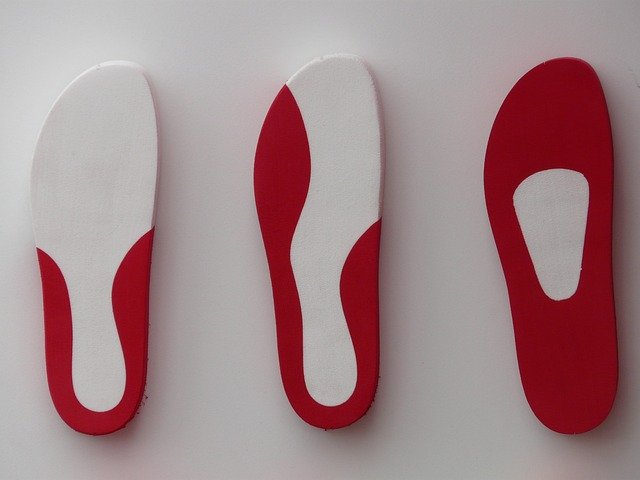Orthopedic shoe styles for everyday comfort
Orthopedic footwear has evolved significantly from the clunky, medical-looking designs of the past. Today's supportive shoes blend therapeutic benefits with contemporary aesthetics, making it possible to prioritize foot health without compromising on style. Whether you're managing a specific foot condition or simply seeking all-day comfort, modern orthopedic shoe options offer solutions that seamlessly integrate into everyday wardrobes.

Orthopedic shoes have undergone a remarkable transformation in recent years. Once stigmatized as unattractive medical necessities, these supportive footwear options now incorporate fashionable elements while maintaining their therapeutic benefits. For many people dealing with foot pain, plantar fasciitis, diabetes-related foot issues, or simply seeking enhanced comfort during long days, finding stylish orthopedic options has become increasingly important. The good news is that manufacturers have responded to this demand with innovative designs that don’t force wearers to choose between comfort and appearance.
What makes footwear truly orthopedic?
Orthopedic shoes are specifically engineered to support proper foot mechanics and address various foot conditions. Unlike standard footwear, genuine orthopedic shoes incorporate several key design elements that contribute to foot health. These typically include extra-deep toe boxes that prevent pressure on the toes, removable insoles that accommodate custom orthotics, firm heel counters that stabilize the foot, and shock-absorbing midsoles that reduce impact during walking.
Additionally, orthopedic footwear often features adjustable closures (like Velcro straps or elastic laces) to accommodate foot swelling throughout the day. The construction focuses on even weight distribution, proper arch support, and metatarsal padding to relieve pressure points. These technical features work together to promote proper alignment, reduce pain, and prevent further foot complications—all while supporting the natural gait cycle and overall posture.
Casual orthopedic shoes that don’t sacrifice style
The casual orthopedic shoe category has seen some of the most dramatic style improvements. Sneaker-inspired designs now incorporate orthopedic features while maintaining a contemporary look that pairs well with jeans and casual attire. Brands have embraced modern color palettes, sleeker profiles, and trendy details like contrast stitching or subtle pattern elements. Many casual orthopedic shoes now feature knit uppers that provide both flexibility and a modern aesthetic.
Slip-on styles have also evolved considerably, with loafer and moccasin designs that offer orthopedic support without the institutional look. These shoes often feature hidden depth to accommodate orthotics while maintaining a streamlined appearance. For warmer weather, orthopedic sandals now include adjustable straps, contoured footbeds, and stylish leather uppers that look appropriate for various casual settings while still delivering therapeutic benefits.
Professional orthopedic footwear for workplace comfort
Professional environments often require more formal footwear, which historically presented challenges for those needing orthopedic support. Today’s workplace-appropriate orthopedic shoes include oxford styles, dress loafers, and modest heels that maintain a professional appearance while incorporating supportive features. These designs typically use premium materials like soft leather that conforms to the foot while still presenting a polished look.
For women, orthopedic pumps now feature wider toe boxes, lower and more stable heel heights (typically under 2 inches), and cushioned insoles—all while maintaining an elegant silhouette. Men’s dress options include traditional oxford and derby styles with added depth, cushioning, and support. Many professional orthopedic shoes also incorporate moisture-wicking linings and antimicrobial treatments, addressing the needs of those who spend long hours on their feet in professional settings.
Athletic orthopedic designs for active lifestyles
For active individuals, finding orthopedic footwear that can keep pace with exercise demands is crucial. Modern athletic orthopedic shoes feature specialized designs for walking, running, hiking, and even court sports. These performance-oriented options incorporate technologies like responsive cushioning, strategic stability features, and breathable materials that prevent excess moisture and heat buildup.
Many athletic orthopedic shoes now feature rocker soles that promote a smooth gait transition, reducing stress on problem areas. Wide toe boxes accommodate foot splaying during exercise, while reinforced heel cups prevent excessive motion that could lead to injury. The visual design of these athletic options has improved dramatically, with contemporary styling that resembles mainstream athletic footwear while providing enhanced support for those with specific foot needs.
Seasonal orthopedic footwear solutions
Orthopedic support shouldn’t be limited by seasonal changes. Winter orthopedic boots now feature waterproof materials, insulation, and non-slip soles while maintaining supportive structures. These designs incorporate easier entry systems like side zippers to accommodate foot conditions that make traditional boot entry challenging.
Summer options have expanded beyond basic sandals to include breathable closed-toe shoes, stylish orthopedic flip-flops with arch support, and water-friendly designs for beach and pool activities. Many seasonal orthopedic options feature adjustability to accommodate swelling that may occur in extreme temperatures, ensuring comfort year-round without compromising on therapeutic benefits or style considerations.
Understanding orthopedic shoe pricing and options
Orthopedic footwear represents an investment in foot health, with prices typically reflecting the specialized design elements and quality materials used in their construction. While costs vary widely depending on brand, features, and whether the shoes are custom or off-the-shelf, understanding the market can help consumers make informed decisions.
| Orthopedic Shoe Type | Average Price Range | Key Features |
|---|---|---|
| Basic Supportive Shoes | $90-$150 | Contoured footbeds, extra cushioning, wider widths |
| Premium Orthopedic Brands | $150-$250 | Advanced support, premium materials, extended sizes |
| Custom Orthopedic Shoes | $300-$600+ | Made-to-measure, specific condition accommodations |
| Orthopedic Sandals | $80-$140 | Contoured footbeds, adjustable straps, metatarsal support |
| Orthopedic Work/Dress Shoes | $120-$250 | Professional appearance with orthopedic features |
Prices, rates, or cost estimates mentioned in this article are based on the latest available information but may change over time. Independent research is advised before making financial decisions.
Many orthopedic shoes qualify for insurance coverage or reimbursement through flexible spending accounts when prescribed by a healthcare provider for specific medical conditions. This can significantly reduce out-of-pocket expenses for those requiring therapeutic footwear. Additionally, several manufacturers offer trial periods and generous return policies, recognizing that finding the right orthopedic fit often requires testing in real-world conditions.
Finding the right orthopedic shoe fit
Even the most advanced orthopedic shoes won’t provide benefits if they don’t fit properly. Proper fitting involves more than just length and width measurements. Orthopedic shoe specialists evaluate foot volume, arch height, pressure points, and gait patterns to determine the most appropriate style and size. Many specialty retailers offer comprehensive fitting services that include foot scanning technology and gait analysis.
When shopping for orthopedic footwear, it’s advisable to try shoes later in the day when feet are naturally more swollen. Bringing any custom orthotics or inserts to the fitting ensures compatibility with new shoes. Quality orthopedic footwear should feel comfortable immediately—the outdated concept of “breaking in” shoes often leads to continued discomfort and potential foot problems. With the variety of orthopedic styles now available, finding options that provide both proper support and aesthetic appeal is increasingly achievable.
The evolution of orthopedic shoe design represents a significant step forward for those requiring supportive footwear. By embracing contemporary styling while maintaining therapeutic benefits, today’s orthopedic options allow wearers to prioritize foot health without feeling self-conscious about their footwear choices. Whether managing specific foot conditions or simply seeking enhanced comfort for daily activities, the current market offers orthopedic solutions that seamlessly integrate into various lifestyles and wardrobes.
This article is for informational purposes only and should not be considered medical advice. Please consult a qualified healthcare professional for personalized guidance and treatment.




